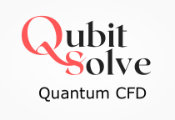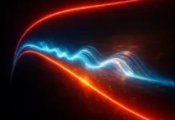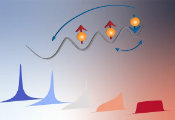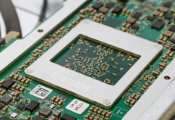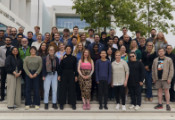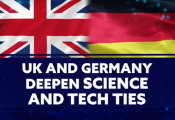A New Level of Precision in Quantum Sensing
April 28, 2025 -- Just as water suddenly turns to ice at 0°C, certain quantum systems also undergo abrupt changes known as phase transitions. Near these critical points, even a tiny shift in conditions can lead to large, measurable effects. While this property has long been theorized to benefit sensing, harnessing it in a quantum device has remained a significant challenge until now.
An EPFL team, led by Prof. Pasquale Scarlino, has successfully bridged the gap between theory and experiment by developing a quantum sensor that uses the enhanced sensitivity near a second-order phase transition, a smooth but dramatic change in a material’s properties without any sudden jump —like a magnet losing its magnetism at a certain temperature—to detect small frequency changes.
“The idea is simple but powerful,” explains Guillaume Beaulieu, PhD student and lead author of the study published in PRX Quantum. “If you bring a system close to a phase transition, it becomes much more responsive to small signals. We built a quantum device that takes advantage of that.”
The device at the heart of the experiment is a superconducting resonator known as a Kerr resonator, cooled to cryogenic temperatures and tuned to operate near the point where the second-order phase transition occurs. Near this critical point, the system becomes highly sensitive to small frequency changes. The researchers demonstrated that the sensor’s performance improves faster than expected as the system size increases, an effect known as quantum-enhanced scaling.
While the Kerr resonator is based on existing superconducting technology, this study explores its operation in a different regime. The results open promising avenues for detecting weak magnetic fields, electromagnetic signals, and mechanical forces.
This work builds on the team’s earlier research on quantum phase transitions in superconducting circuits. By connecting these foundational insights to practical sensing applications, the EPFL researchers are helping to turn fundamental physics into powerful tools for quantum technology.
“The next step is to integrate this critical sensing approach into real-world devices,” says Prof. Pasquale Scarlino. “We aim to explore this enhanced sensitivity to detect extremely weak magnetic fields, microwave signals, and mechanical forces.”
Such highly sensitive quantum sensors could be used in quantum computing to read out fragile qubit states more efficiently, or in fundamental physics experiments where detecting very small forces or fields is crucial. By exploiting the sharp response near the critical point, these devices promise measurements with fewer errors, opening new possibilities across multiple fields.


